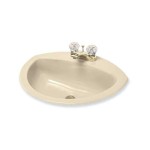How Do You Paint Over Bathroom Tiles?
Painting over bathroom tiles can be a cost-effective and stylish way to refresh your bathroom. It allows you to change the look and feel of the space without the expense and disruption of replacing the tiles entirely. However, it is important to understand the process and the proper steps involved to ensure a successful and durable finish. This article will guide you through the necessary steps for painting over bathroom tiles, providing insights into the materials, preparation, and application techniques.
Preparing the Tiles for Painting
The success of painting over bathroom tiles depends heavily on proper preparation. This stage involves cleaning, sanding, and priming the tiles to create a smooth and receptive surface for the paint. Here's how to prepare your tiles:
1. **Clean the Tiles Thoroughly:** Begin by thoroughly cleaning the tiles to remove any dirt, grime, soap scum, or mold. Use a mild detergent and a non-abrasive sponge. Rinse the tiles with clean water and allow them to dry completely. 2. **Repair Any Cracks or Chips:** Inspect the tiles for any cracks, chips, or imperfections. If necessary, use a tile repair kit or epoxy to fill in these areas. Allow the repair material to cure completely before proceeding. 3. **Sand the Tiles Lightly:** To enhance the paint adhesion, lightly sand the tiles using fine-grit sandpaper (220 grit). This will create a slightly rough surface that the paint can grip onto. 4. **Clean the Tiles Again:** After sanding, wipe down the tiles with a damp cloth to remove any sanding dust. 5. **Apply Tile Primer:** Finally, apply a tile primer specifically formulated for use on bathroom surfaces. This primer helps to seal the tiles and create a uniform surface for the paint to adhere to. Allow the primer to dry completely before moving on to the painting stage.
Choosing the Right Paint for Bathroom Tiles
Selecting the right paint for your bathroom tiles is crucial for achieving a long-lasting and durable finish. There are various types of paint designed for different surfaces and environments. Consider these factors when choosing the paint:
1. **Moisture Resistance:** Bathrooms are prone to high humidity and moisture levels. Choose a paint specifically formulated for wet areas, such as epoxy paint or moisture-resistant acrylic paint. These paints are designed to withstand moisture and prevent peeling, flaking, or mildew growth. 2. **Durability:** Bathroom tiles experience frequent wear and tear from daily use. Opt for a paint that is known for its durability and scratch resistance. Epoxy paints are particularly durable and can withstand heavy use. 3. **Color and Finish:** Consider the desired color and finish for your bathroom tiles. A glossy finish is easy to clean and maintain, while a matte finish provides a softer, more subtle aesthetic. 4. **Ventilation:** Always ensure adequate ventilation when painting in a bathroom. Open windows and doors to allow fresh air to circulate and prevent the build-up of fumes. 5. **Safety Precautions:** Protect yourself and others by wearing appropriate safety gear when painting, including gloves, eye protection, and a respirator mask. Follow the manufacturer's instructions carefully and work in a well-ventilated area.
Painting the Bathroom Tiles
Once the tiles are properly prepared and the right paint has been chosen, you can start painting. Follow these steps for a smooth and even application:
1. **Prepare the Area:** Cover surrounding areas with drop cloths or painter's tape to protect them from paint splatters. 2. **Apply the Paint Thinly:** Use a high-quality paintbrush or roller specifically designed for tile painting. Apply the paint in thin, even coats, working in small sections at a time. 3. **Let Each Coat Dry Completely:** Allow each coat of paint to dry completely before applying the next. Drying time will vary depending on the type of paint and the environmental conditions. 4. **Apply Multiple Coats:** For optimal coverage and durability, apply two to three thin coats of paint. Each coat will help to build up the color and create a more even finish. 5. **Clean Up:** Once the paint has dried completely, clean up any spills or drips with a damp cloth. Remove any painter's tape carefully to avoid damaging the freshly painted surface.
Painting over bathroom tiles can be a rewarding project that transforms your bathroom space. By following these steps and using the right materials and techniques, you can achieve a beautiful and durable finish that will enhance the look and feel of your bathroom for years to come.

How To Paint Over Tile Average But Inspired

Yes You Can Paint Your Bathtub And Tile Here S How Toolbox Divas

How To Paint Tile Floor Angela Marie Made

Can You Paint Tiles Up Cycle With B Q Vaslper Review

Can I Paint Ceramic Tiles In Bathroom Ramsden Painting

Yes You Really Can Paint Tiles Rust Oleum Tile Transformations Kit Pink Little Notebookpink Notebook

How To Paint Over Tile Average But Inspired

How To Paint Tiles 3 Easy Steps Transform Dated On A Budget

Small Bathroom Makeover With Painted Tile And Floors The Home Depot

How To Refinish Outdated Tile Yes I Painted My Shower Domestic Imperfection Diy Home Improvement Bathroom
Related Posts







